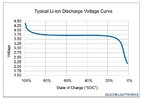Hi,
I have a 2016.6 facelift S75 RWD. The announced typical range is becoming shorter and the achieved range also. Right now, with around 165k kms @100% SOC the car says 325 Km. As far as the TeslaFI stats shows me, the car is the worst S75 one with more or less the same mileage, ☹.
Additionally, when I stop the can with less than 20%, suddenly the SOC drops some points, 3…4…5 %, ☹.
With all this happening I was wondering if the battery would need some kind of battery balancing, bms calibration, etc. After searching & reading a lot about this, I become curious about the battery modules values, so I’ve bought a diagnostic cable and a OBD Bluetooth dongle to get Scan My Tesla working. Here are the values that more called my attention in different SOCs:
Apparently, the cells seem reasonably balanced to me, but the bms looks really uncalibrated at low SOCs, do you agree?
For a real SOC of 9% a VCell average should be lower than 3,337 V, or am I thinking wrongly?
This indicates that the battery has more usable energy than the car says and the bms is not allowing me to use because is showing lower SOC % and range values?
What should I do to recover some range availability?
I hope you can help me.
PS: during the week the car is doing around 200 kms per day, more or less half of them in Highway, and using SOC from 90% to more or less 20%.
Best regards
I have a 2016.6 facelift S75 RWD. The announced typical range is becoming shorter and the achieved range also. Right now, with around 165k kms @100% SOC the car says 325 Km. As far as the TeslaFI stats shows me, the car is the worst S75 one with more or less the same mileage, ☹.
Additionally, when I stop the can with less than 20%, suddenly the SOC drops some points, 3…4…5 %, ☹.
With all this happening I was wondering if the battery would need some kind of battery balancing, bms calibration, etc. After searching & reading a lot about this, I become curious about the battery modules values, so I’ve bought a diagnostic cable and a OBD Bluetooth dongle to get Scan My Tesla working. Here are the values that more called my attention in different SOCs:
- @SOC 43%: VCell average = 3,764 V, Cell imbalance = 8 mV
- @SOC 12%: VCell average = 3,413 V, Cell imbalance = 29 mV
- @SOC 9%: VCell average = 3,337 V, Cell imbalance = 33 mV
- @SOC 89%: VCell average = 4,105 V, Cell imbalance = 4 mV, during charging
- Nominal Full Pack = 62 Kwh
Apparently, the cells seem reasonably balanced to me, but the bms looks really uncalibrated at low SOCs, do you agree?
For a real SOC of 9% a VCell average should be lower than 3,337 V, or am I thinking wrongly?
This indicates that the battery has more usable energy than the car says and the bms is not allowing me to use because is showing lower SOC % and range values?
What should I do to recover some range availability?
I hope you can help me.
PS: during the week the car is doing around 200 kms per day, more or less half of them in Highway, and using SOC from 90% to more or less 20%.
Best regards



